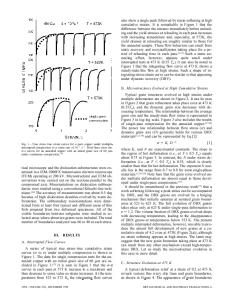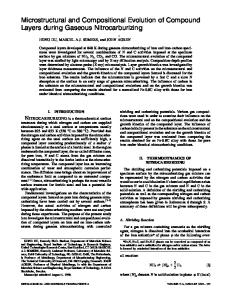Microstructural and Property Evolution of Continuous Columnar-Grained Polycrystalline Copper during Extreme Plastic Defo
- PDF / 3,337,375 Bytes
- 8 Pages / 593.972 x 792 pts Page_size
- 34 Downloads / 322 Views
JMEPEG (2019) 28:1884–1891 https://doi.org/10.1007/s11665-019-03964-w
Microstructural and Property Evolution of Continuous Columnar-Grained Polycrystalline Copper during Extreme Plastic Deformation at Room Temperature Yu Wang and Hong-Jin Zhao (Submitted April 19, 2018; in revised form December 8, 2018; published online March 4, 2019) An extreme extensibility with a true strain of 11.12 has been obtained for continuous columnar-grained (CCG) polycrystalline copper at room temperature, which was cold-drawn from a 10-mm-diameter as-cast rod into a 38.5-lm-diameter ultra-fine wire without any intermediate softening heat treatment. During the extreme plastic deformation, the ultimate tensile stress increased from 140 MPa for as-cast CCG copper to 525 MPa for the deformed sample at a true stain of 11.12, while the relative electrical conductivity maintained a high value of 97.6% IACS. On this basis, CCG copper is an excellent raw material for the fabrication of ultra-fine wires with both high strength and high electrical conductivity. The original columnar grains experienced grain subdivision and formed fibrous grains along the drawing direction with a fibrous longitudinal morphology and curly transverse microstructure at medium to high strain. The subdivision of the fibrous grains then went on as the extreme plastic deformation continued. Large amounts of strain-induced boundaries and microstructural refinement facilitated the storage of abundant glide dislocations created by extreme plastic deformation. Thus, extreme plastic extensibility can be achieved through continuous work hardening of CCG copper. Keywords
continuous columnar grains, electrical conductivity, extreme plastic deformation, extreme plastic extensibility
1. Introduction High-performance ultra-fine copper wires are used for precise electrode wires and integrated circuit bonding wires, which have a wide application in microelectronics, telecommunications and electric devices. However, conventional ultrafine wire processing requires a large number of drawing passes and intermediate softening heat treatments. Murr and Flores (Ref 1) and Norasethasopon and Yoshida (Ref 2) reported that the processing of ultra-fine wires is complicated and the breakage of wires occurs in some cases, leading to high manufacturing costs. According to the previous studies of Zhang et al. (Ref 3, 4), copper rods with a dense continuous columnar-grained (CCG) microstructure fabricated by continuous unidirectional solidification possess good surface quality, excellent cold workability and high electrical conductivity and therefore are an excellent raw material for the fabrication of high-performance copper wires and ultra-fine wires. In addition, the unidirectional structure of the copper rods can reduce the wire breakage phenomenon effectively, shorten the preparation process of fine copper wires and lower the processing costs (Ref 5).
Yu Wang and Hong-Jin Zhao, School of Materials Science and Engineering, JiangXi University of Science and Technology, Ganzhou 341000, China. Contact e-mai
Data Loading...











